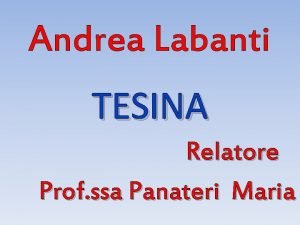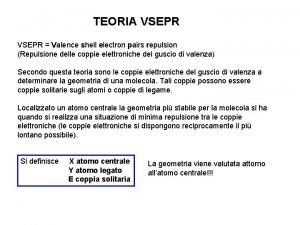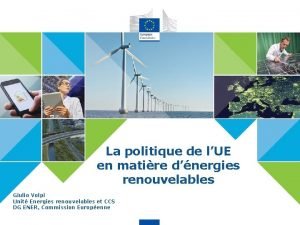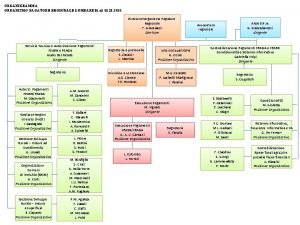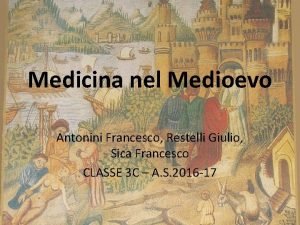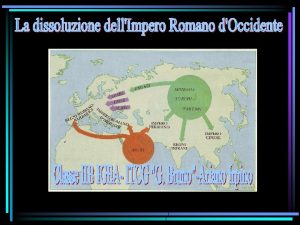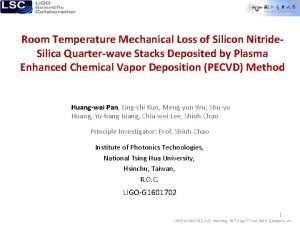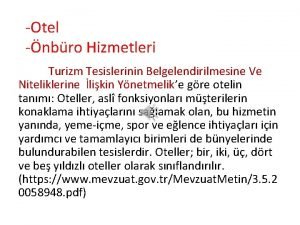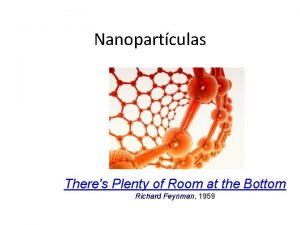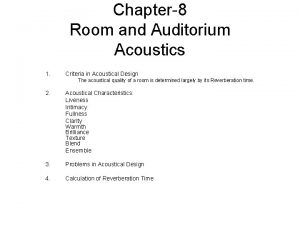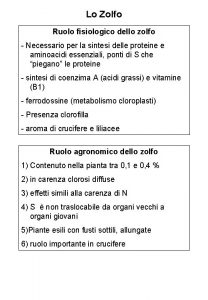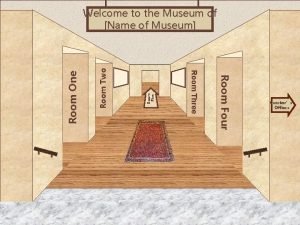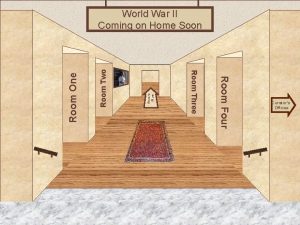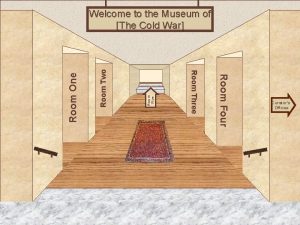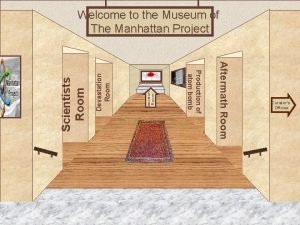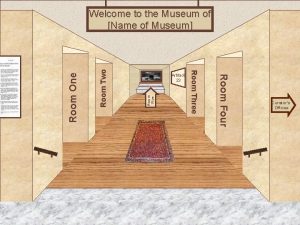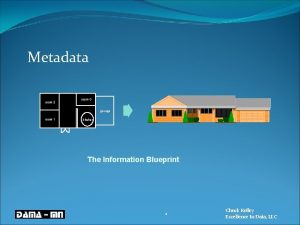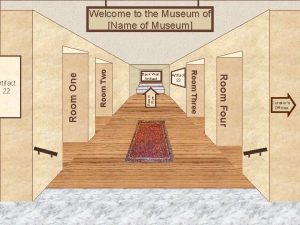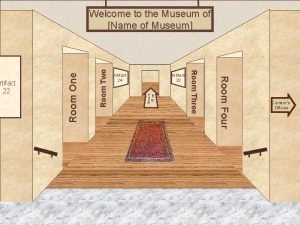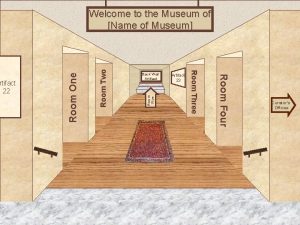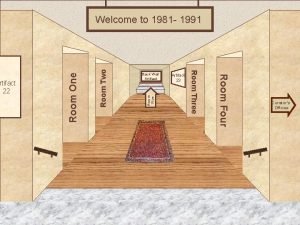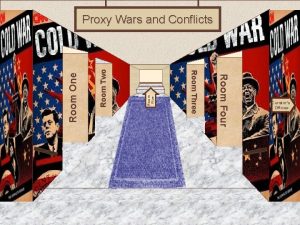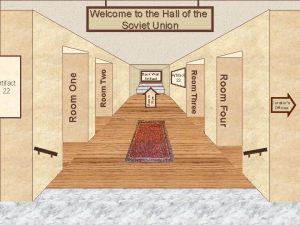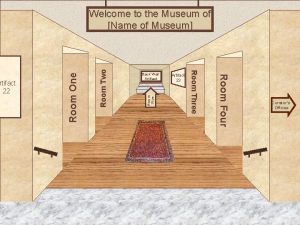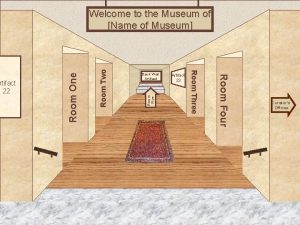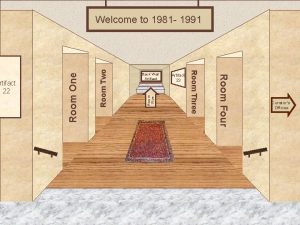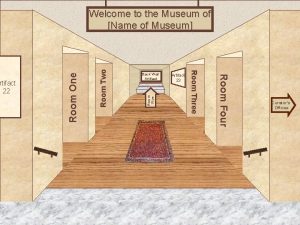Giulio Solferino room 2056 gsolferistfx ca www zolfo










































- Slides: 42

Giulio Solferino - room 2056 gsolferi@stfx. ca www. zolfo 78. com Facts about me: BSc and MSc at University of Milan Ph. D at ETH Zurich Expertise: Petrology, Mineralogy, Volcanology, Experiments at high P-T Know a lot of: Alps mountains, Cars, Australia

Eruption Styles

Volcanoes are not randomly distributed over the Earth's surface. Most are concentrated on the edges of continents, along island chains, or beneath the sea forming long mountain ranges. More than half of the world's active volcanoes above sea level encircle the Pacific Ocean to form the circum-Pacific "Ring of Fire. "

Volcanoes and plate tectonics

(Active) Volcanoes in the solar system Venus contains 1738 volcanic features. There are 168 large volcanoes, 289 intermediate volcanoes, and probably hundreds of thousands small volcanoes. Volcanoes on Mars have erupted over a wide range of times in history.

(Active) Volcanoes in the solar system Io has 350 active volcanic centres. Volcanism is due to internal frictions as a consequence of Jupiter’s gravitational attraction On Triton, the satellite of Neptune, nitrogen geysers were observed. Enceladus is a moon of Saturn. Water plumes are present on its surface. Encelauds

Eruption Styles 1. Generic 2. Effusive 3. Explosive

Generic Eruption Styles (1) Fissure eruptions: Volcanic material issues from a crack or fissure. These eruptions tend to be typical of most oceanic volcanoes. Hawaii

Generic Eruption Styles (2) Central vent or pipe eruptions: volcanic material issues from a vent at the apex or center of the volcano. Tend to be typical of most continental volcanoes. Mt. Etna

Generic Eruption Styles (2) Central vent or pipe eruptions a) Summit: Central eruptions can also be called summit eruptions, if they are located at the volcano's summit b) Flank: Volcanic material erupted from the side of a volcano. c) Lateral: Fed by dikes radiating away from the central conduit system and occur at some distance from the summit craters. d) Adventive or parasitic: Cone-shaped accumulations of volcanic material (usually from flank eruptions).

Effusive Eruption Styles Refers to the nonexplosive extrusion of magma at the surface. However most eruptions have some explosive component. Lava flows and fields (collection of flows from same vent) Lave domes (mound over the vent) and coulees (aspects of dome and flow)

Effusive Eruption Style

Explosive Eruption Styles 1. 2. 3. 4. Hawaiian Strombolian Vulcanian Plinian a) Vesuvian (subplinian) 5. Peléean 6. Surtseyan

Explosive Eruption Styles Classification Physical nature of magma Character of explosive activity Nature of effusive activity Nature of dominant ejecta Structures built around vent

1. Hawaiian Eruptions These eruptions of basaltic, highly fluid lavas of low gas content give rise to effusive lava flows and less voluminous pyroclastic debris. Most eruptions start from fissures, commonly as a line of lava fountains, that ultimately coalesce to one or more central vents. Thin, fluid lava flows can gradually build up large broad shield volcanoes with lava lakes at the summit crater. Volcanoes with this activity include Mauna Loa and Kilauea. Iki, Hawaii.

1. Hawaiian Eruptions Physical nature of magma: Fluid, basaltic, almost gas-absent. Character of explosive activity: Weak ejection of very fluid blebs; lava fountains, low eruption columns; basaltic cinders Spatter cone Nature of effusive activity: Thin, often extensive flows of fluid lava. Nature of dominant ejecta: Cow-dung bombs and patter; very little ash. Structures built around vent: Spatter cones and ramparts; very broad flat (small) lava cones; long-lived eruptions form lava lakes and tubes; linear vents

1. Hawaiian Eruptions Flows from Kilauea’s Puu Oo vent A lava fountain erupted by Izu-Oshima volcano in Japan in 1986 reached a height of 1, 600 m http: //www. youtube. com/watch? v=Q 4 MSt 6 Pm. PHc

2. Strombolian Eruptions These eruptions are characterized by intermittent and discrete explosions and fire fountains separated by periods of less than a second to several hours in magma columns near the surface. Explosion clouds seldom rise more than 500 m, and are usually grey, with little or no lightning. Lava flows may follow explosive activity, and may continue uninterruptedly for months or years. Volcanoes with this activity include Stromboli and Mount Etna, Sicily, Italy; and Paricutin, Mexico.

2. Strombolian Eruptions Physical nature of magma: Moderately fluid. Both CO 2 and H 2 O are important. Character of explosive activity: Weak to violent ejection of pasty fluid blebs. Nature of effusive activity: Thick, not extensive flows of moderately fluid lava; flows may be absent. Nature of dominant ejecta: Spherical to fusiform bombs; cinder; small to large amounts of vitric (glassy) ash. Structures built around vent: Cinder cone

2. Strombolian Eruptions Photograph by B. Chouet in December 1969. Close view of Stromboli Volcano erupting incandescent molten lava framgents.

2. Strombolian Eruptions Small eruption on Stromboli – Photograph GS 2004

3. Vulcanian Eruptions These eruptions are similar to Plinian, but are characterized by more explosive activity that produces a mushroom-shaped eruption cloud. During the main phase, eruption of viscous, gas-rich magma forms a dark eruption cloud charged with vitric (glassy) ash. The tephra are well bedded, show marked gravity sorting, and generally, have widespread distribution. Volcanoes with this activity include Vulcano, Lipari Islands, Italy; and Okmak, Aleutian Islands.

3. Vulcanian Eruptions Physical nature of magma: Viscous; basaltic to rhyolitic. Water is the dominating volatile. Character of explosive activity: Moderate to violent ejection of solid or very viscous hot fragments of new lava. Nature of effusive activity: Flows commonly absent; when present they are thick, and stubby; ash flows and base surges rare. Nature of dominant ejecta: Essential, glassy to lithic, blocks and ash; pumice; breadcrust bombs. Structures built around vent: Ash cones; block and ash cones.

3. Vulcanian Eruptions Sakurajima, Japan Cinders were issued up to >2, 500 m high (23: 03 on 18 May 1991) Redoubt, Alaska

3. Vulcanian Eruptions La Fossa volcano, island of Vulcano – Photograph GS 2004

4. Peléean Eruptions are typically violent and destructive, involve glowing avalanches of fresh, effervescing magma. Separation of a gas cloud from the avalanche produces a nuée ardent that may move independently of the associated ash flow. Viscous magma follows to form steep-sided domes and spines or short, thick flows, the flanks of which may collapse by gravity or internal explosions to produce hot block-andash flows. Volcanoes with this activity include Mount Pelée, Martinique; Mount Mayon, Philippines; Santiaguito, Guatemala; and Mount Lamington, Papua New Guinea.

4. Peléean Eruptions Physical nature of magma: Viscous; dacitic, andesitic, rhyolitic. Considerable amounts of water. Character of explosive activity: Moderate to violent ejection of solid or very viscous hot fragments of new lava; commonly with glowing avalanches. Nature of effusive activity: Domes and/or very short, thick flows; may be absent. Nature of dominant ejecta: Essential, glassy to lithic, blocks and ash; pumice. Structures built around vent: Ash and pumice cones; domes; local development of volcanic spines.

4. Peléean Eruption Mt Pelee, May 08 th, 1902 An extrusion of extremely high-viscous rhyolitic lava formed a 300 m high spine.

5. Plinian Eruptions These eruptions, commonly lasting several hours to about 4 days, involve high eruption rate, voluminous, gas-rich eruptions. Produce widely dispersed sheets of pyroclastic material derived from stable, high eruption columns. Volcanoes with this activity include Valles Caldera, New Mexico; and Mount St. Helens, Washington. Eruption style originally described in a letter written by Pliny the Younger, about the 79 AD Vesuvius eruption that killed Pliny the Elder (his Uncle).

5. Plinian Eruptions Physical nature of magma: viscous; felsic (rhyolitic, trachytic, phonolitic, dacitic) becoming more mafic during course of eruption. Highly water-bearing magma. Character of explosive activity: paroxysmal ejection of large volumes of ash, with accompanying caldera collapse. Nature of effusive activity: ash flows, small to very voluminous (up to 1, 000 cubic km) sheets; may be absent. Nature of dominant ejecta: glassy ash and pumice; wellsorted; welding absent. Structures built around vent: Widespread pumice lapilli and ash beds; generally no cone building.

5. Plinian Eruptions “It rose into the sky on a very long "trunk" from which spread some "branches. " I imagine it had been raised by a sudden blast, which then weakened, leaving the cloud unsupported so that its own weight caused it to spread sideways. Some of the cloud was white, in other parts there were dark patches of dirt and ash. The sight of it made the scientist in my uncle determined to see it from closer at hand. ” Vesuvius, 1822

5. Plinian Eruptions http: //www. youtube. com/watch? v=bg. Rn. Vhbf. IKQ Mt. St. Helens, Washington 1980

5. Plinian Eruptions Pinatubo, 1991 Several plinian eruptions took place over a few days. The largest eruptive column was about 35 km in height.

6. Surtseyan Eruptions These eruptions, also known as phreatomagmatic eruptions, represent violent explosions caused by rising basaltic (or more rarely andesitic) magma coming into contact with water. Broad pyroclastic cones of primarily ash, called tuff rings, are built by explosive disruption of rapidly cooled (quenched) magma. Magma fragmentation occurs chiefly due to thermal shock when the magma is quenched; particles are bound by fractures and broken vesicles. Volcanoes with this activity include Capelinhos; Surtsey, Iceland; and Taal, Philippines.

6. Surtseyan Eruptions Physical nature of magma: Viscous; basaltic. Character of explosive activity: Violent ejection of solid, warm fragments of new magma; continuous or rhythmic explosions; base surges. Nature of effusive activity: Short, locally pillowed, lava flows; lavas may be rare. Nature of dominant ejecta: Lithic, blocks and ash; often accretionary lapilli; spatter, fusiform bombs and lapilli absent. Structures built around vent: Tuff rings

6. Surtseyan Eruptions Surtsey, Iceland The eruption began 100 m below sea level on 14 Nov. 1963, and black eruption columns rose 66 m above the sea surface

Summary Modified from Cas et al. (1988)

VEI: Volcanic Explosivity Index

VEI: Volcanic Explosivity Index

Magma Explosive activity Effusive activity Dominant ejecta Structures Hawaiian Strombolian Vulcanian Peleean Plinian Surtseyan Fluid Moderately fluid Viscous Fountains, low eruption columns Weak to violent ejection Moderate to violent ejection of solids Thin, extensive flows Thick, nonextensive lava Flows commonly absent Domes Ash flows Pillowed lava flows Bombs, cinders, vitric ash Blocks and ash, pumice, bombs Lithic ejecta, blocks and ash, pumice Glassy ash and pumice Block and ash, accretionary lapilli Lava lakes Cinder cones and cones Ash cones Domes, spines Ash beds Tuff rings Bombs Ejections of Sudden solids, ejection of nuee ash ardents Violent ejections

Conclusions There are general, effusive and explosive ways to classify of volcanic eruption styles. Eruption styles may be characterized by the physical nature of the lava, the explosiveness of the eruption, the eruptive products and subsequent volcanic features formed. One volcano may display more than one eruption style over its lifetime.

Lecture ppt file: my web page or http: //people. stfx. ca/gsolferi/
 Giulio solferino
Giulio solferino Vdi 2056
Vdi 2056 Let's look at some examples
Let's look at some examples Ciclo dell'azoto
Ciclo dell'azoto Ciclo dello zolfo
Ciclo dello zolfo Ciclo dello zolfo zanichelli
Ciclo dello zolfo zanichelli Tetrafluoruro di zolfo
Tetrafluoruro di zolfo Giulio zhou
Giulio zhou Giulio casella
Giulio casella Istituto comprensivo caio giulio cesare osimo
Istituto comprensivo caio giulio cesare osimo Giulio volpi
Giulio volpi Giulio del monte regione lombardia
Giulio del monte regione lombardia Giulio galante
Giulio galante Politica estera di augusto
Politica estera di augusto Scuola media giulio cesare savignano
Scuola media giulio cesare savignano Caio giulio cesare osimo
Caio giulio cesare osimo Giulio cozzoli
Giulio cozzoli Scuola media san giulio
Scuola media san giulio Lilyblax
Lilyblax Giulio restelli
Giulio restelli Giulio cossu
Giulio cossu Sarcoidosis
Sarcoidosis Giulio lughi
Giulio lughi Downstairs rooms in a house
Downstairs rooms in a house To room nineteen
To room nineteen Hotel database sql queries
Hotel database sql queries Socrative com room
Socrative com room Prepositions of place living room
Prepositions of place living room Silicon at room temperature
Silicon at room temperature Ivy day in the committee room analysis
Ivy day in the committee room analysis Room division manager görev tanımı
Room division manager görev tanımı Central training room definition
Central training room definition Central training room
Central training room 1844 room buckingham palace
1844 room buckingham palace Wywieszka room service
Wywieszka room service Kimball bus architecture
Kimball bus architecture 125m3 room size
125m3 room size There's plenty of room at the bottom
There's plenty of room at the bottom Descriptive text about room
Descriptive text about room Yes clean your room
Yes clean your room Room acoustics design criteria
Room acoustics design criteria Read the room quote
Read the room quote Head room shot
Head room shot




